July 18-19
Couple of side trips
Greenwich:
I had a afternoon meeting on Thursday near London Bridge (close to our “dorm”; so Linda and I decided take advantage of the good weather and head out to Greenwich, a short tube or boat ride down-river from London.
The Cutty Sark, the 19th century sailing vessel, was damaged and covered in plastic and scaffolding; so we dedicated to walk straight up to the Royal Observatory on the hill overlooking Greenwich town, the Naval College and far-off London.
I never really thought about it too much—how we take for granted being able to find out where we are on the face of the earth. Now we have Google maps, GIS devices—even exquisitely detailed maps are a relatively recent invention. Apparently, latitude (the distance north or south of the equator) is easy to determine through celestial navigation. Longitude, the location east or west of some fixed location (like Greenwich) is more difficult—especially without an accurate clock. The time distance between London and NYC, for example, is 5 hours, representing 75 degrees of longitude or 15 degrees for each hour. Determining the time in a far-off ocean using the stars/sun/moon is not to hard, but knowing the time back home is much more difficult in an era of pendulum and stone weighted clocks that are affected by the temperature, humidity and movement of the ship across the water. It wasn’t until someone developed a reliable timepiece and until the Admirality established Greenwich as the “prime meridian” that navigators could accomplish both requirements of determining their location. Fascinating!
So Linda and I took turns straddling the prime meridian; then toured the observatory where observers sat and charted the heavens to establish accurate celestial maps for use in navigation. Hence, the British ascendancy as the “ruler of the seas”. I have a whole new appreciation for the self-taught watchmaker who solved the problem and made it possible.
It’s an interesting analogy for the public health profession. Knowing where we are takes a thorough knowledge of where we started (prime meridian) and what has happened in the interim—how long we have traveled. I think it is a case for evidence-based interventions and good evaluation—the first providing a reference point and the latter, a measurement/observation of the facts.
As an instance of irony to this analogy, Linda and I got on the wrong train for the return trip and arrived at London Bridge station without a ticket. The gate attendant was kind enough to listen to our sad story and let us through—his smile indicating that this was not the first time it has happened.
Broad Street Pump and British Portrait Museum
It poured rather vigorously on Friday morning; so Linda and I decided to stick close to home and explore some indoor attractions. Fortunately, the weather broke just long enough for us to fit in a visit to the Broad Street Pump, just north of Piccadilly Circus.
In 1853 cholera ravaged London. John Snow, a local physician, noticed that the people on Brewery St. (who drank the beer) did not suffer as greatly as those who lived on Broad (now Broadwick) street who drank from a local well. Without fully understanding the germ theory or the oral-fecal route of disease transmission from sewage in the water, he took the handle off the pump in an effort to quell the outbreak. Hence, the beginnings of modern epidemiology and the name of this blog.
I have to admit that the pump, a rather inconspicuous metal affair in the middle of the sidewalk on a corner of the street, holds a fascination for me. John Tierney, our former Deputy Director and mentor to many of us, frequently referred to it and often accompanied his wife on flea market forays with the intent to find “the handle on the Broad Street pump.” He found a likeness, and it now hangs in the Director’s Conference Room with the story of John Snow. By the way, there is a John Snow Pub just across the street in case a devout public health professional want to “hoist a pint” in Snow’s honor!
National Portrait Gallery
From here we went to the Portrait Gallery for a quick tour. I can’t say that I am an admirer of classic art, but the extensive collection displayed portraits from the modern to those many centuries old. We recognized some of the more famous names (Churchill, Gladstone, Johnson, Burns, Montgomery, etc.). My favorite was the display of Princess Diana—a collection of formal and informal poses with some almost “tomboyish” renderings. What a loss!
We also marveled at several paintings of the Houses of Commons and Lords commemorating some important event. One wall-sized painting showed 259 individual faces, each one distinctive and fully-rendered, an undertaking of 10 years work by the artist. Remarkable!
The weather finally broke into a sunny, arid afternoon; so we decided to walk down by the Embankment along the Thames and toward our “dorm”. It was a beautiful walk, punctuated by statues, riverboats, panoramic scenes of the waterfront on the opposite side, and, of course, other people hurrying home from work or out for a stroll. We were surprised to find ourselves back in the neighborhood in so little time—a 4 mile distance as we later determined. So we were more than ready for dinner in the local pub.
Saturday, 21 July 2007
Subscribe to:
Post Comments (Atom)

















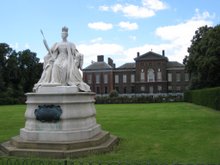
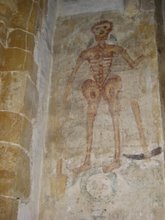
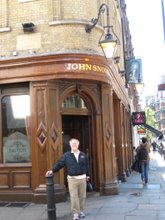
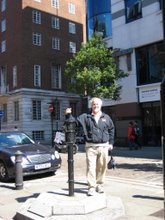
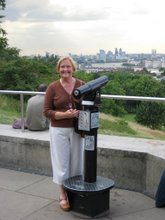
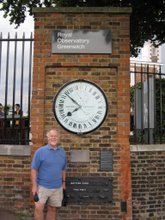
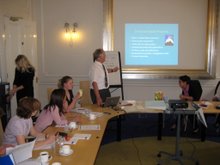
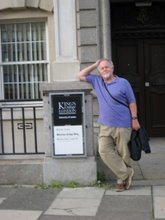

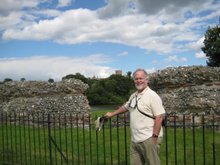
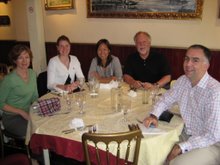
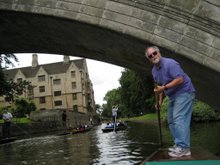
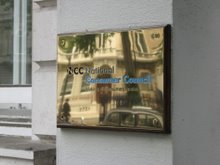
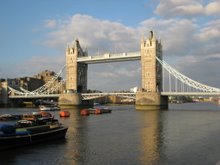
No comments:
Post a Comment